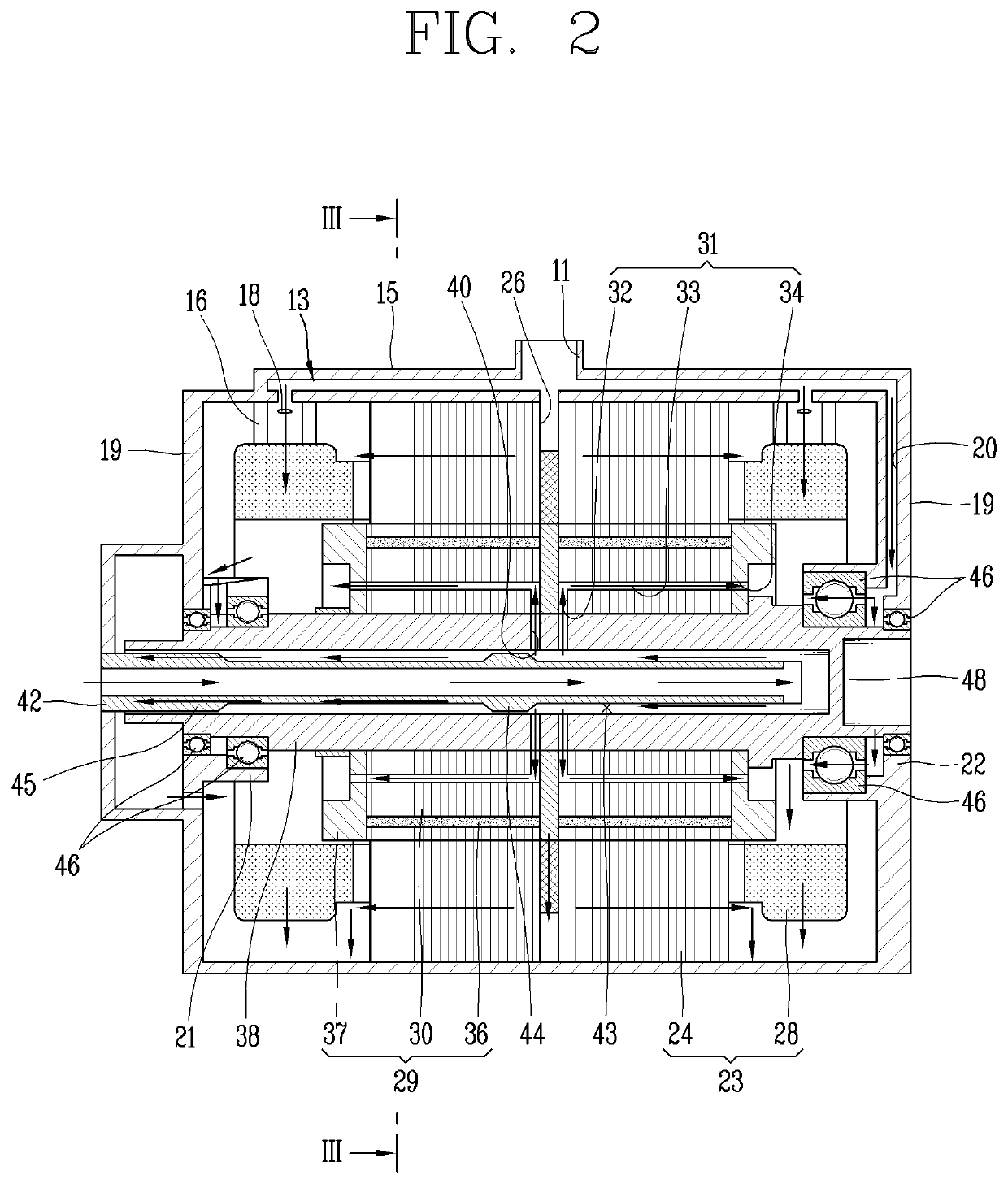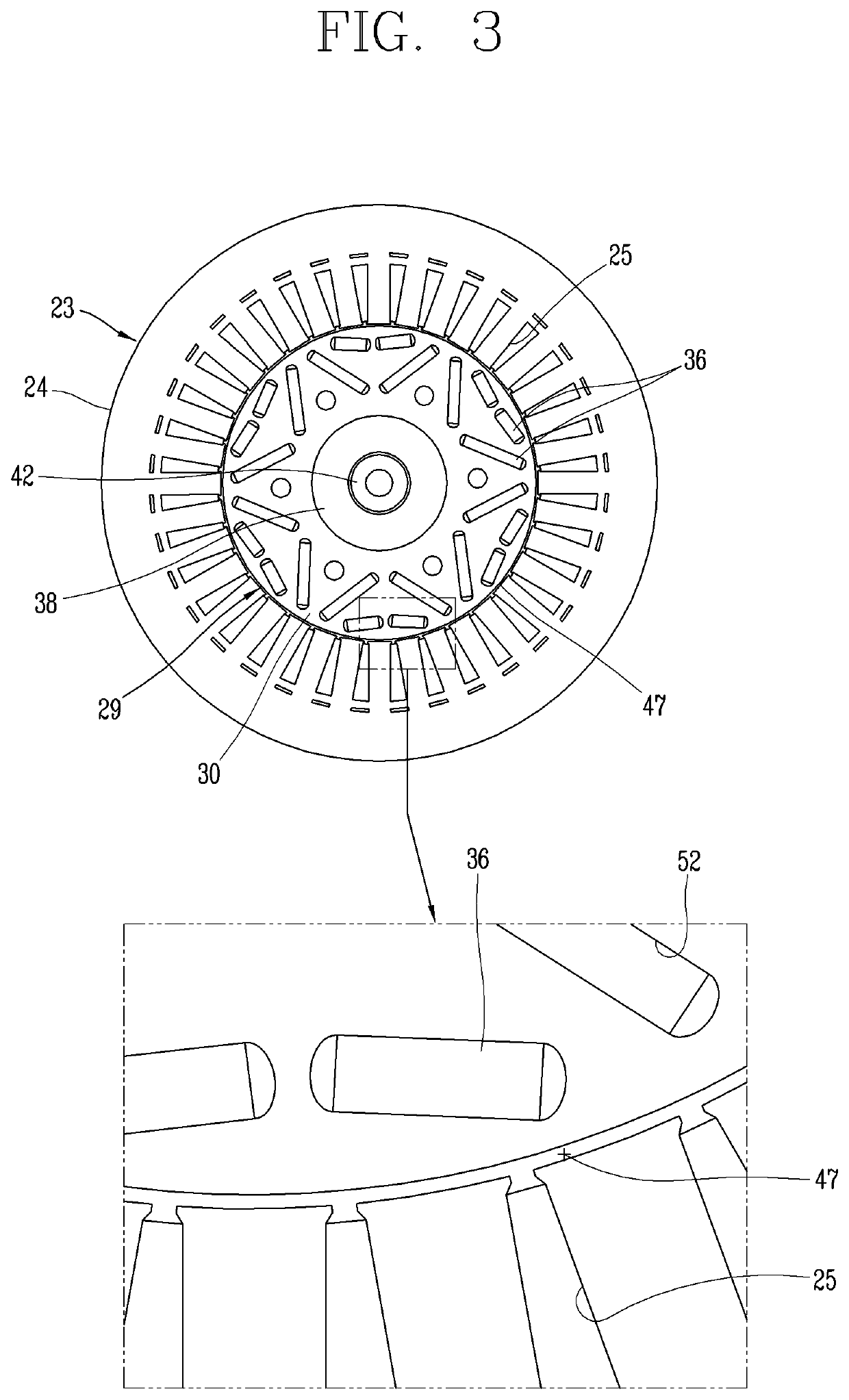Electric motor
a technology of electric motors and rotor cores, applied in the direction of magnetic circuit rotating parts, mechanical energy handling, shape/form/construction, etc., can solve the problems of damage, sealing problems, and the cooling fluid is not evenly distributed so as to reduce the pressure loss of the cooling passage provided in the rotor core, increase the cooling efficiency, and reduce the effect of heat generation
- Summary
- Abstract
- Description
- Claims
- Application Information
AI Technical Summary
Benefits of technology
Problems solved by technology
Method used
Image
Examples
Embodiment Construction
[0060]Hereinafter, embodiments will be described with reference to the accompanying drawings. In the drawings, the same or similar elements are designated with the same or similar reference numeral, and redundant description has been omitted. Suffixes, such as “module” and “unit”, may be used to refer to elements or components. Use of such a suffix herein is merely intended to facilitate description of the specification, and the suffix itself is not intended to give any special meaning or function. In describing embodiments, if a detailed explanation for a related known technology or construction is considered to unnecessarily divert the gist, such explanation has been omitted but would be understood by those skilled in the art. Also, it should be understood that the accompanying drawings are merely illustrated to easily explain the concept, and therefore, they should not be construed to limit the technological concept disclosed herein by the accompanying drawings, and the concept s...
PUM
 Login to View More
Login to View More Abstract
Description
Claims
Application Information
 Login to View More
Login to View More - R&D
- Intellectual Property
- Life Sciences
- Materials
- Tech Scout
- Unparalleled Data Quality
- Higher Quality Content
- 60% Fewer Hallucinations
Browse by: Latest US Patents, China's latest patents, Technical Efficacy Thesaurus, Application Domain, Technology Topic, Popular Technical Reports.
© 2025 PatSnap. All rights reserved.Legal|Privacy policy|Modern Slavery Act Transparency Statement|Sitemap|About US| Contact US: help@patsnap.com



